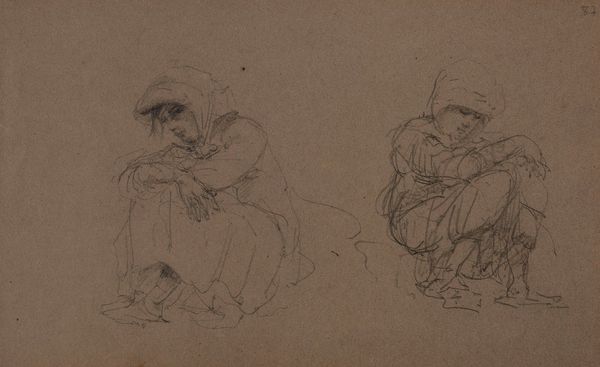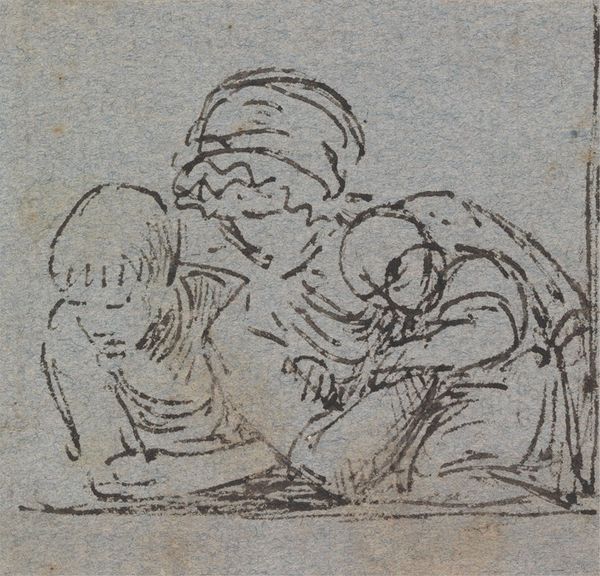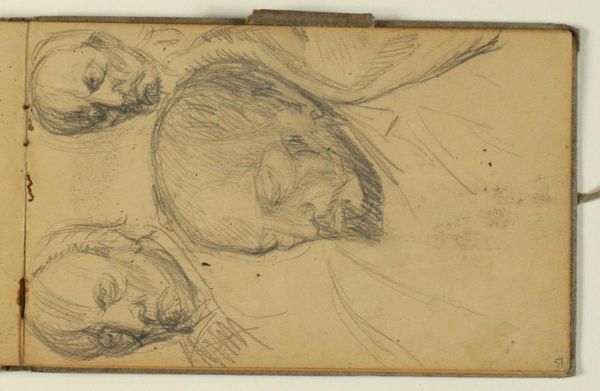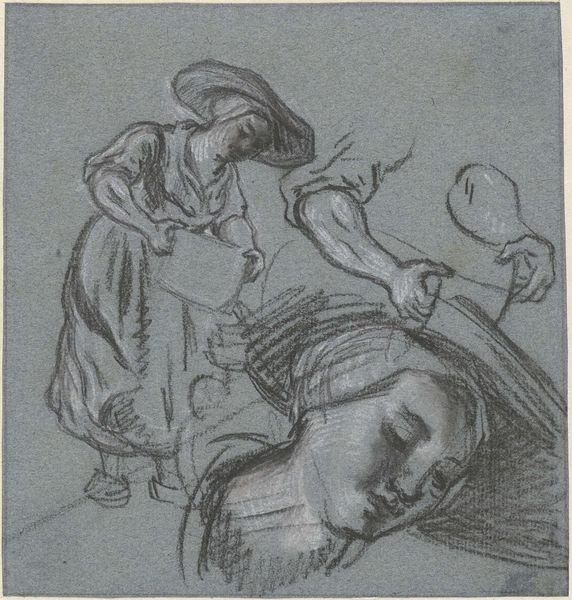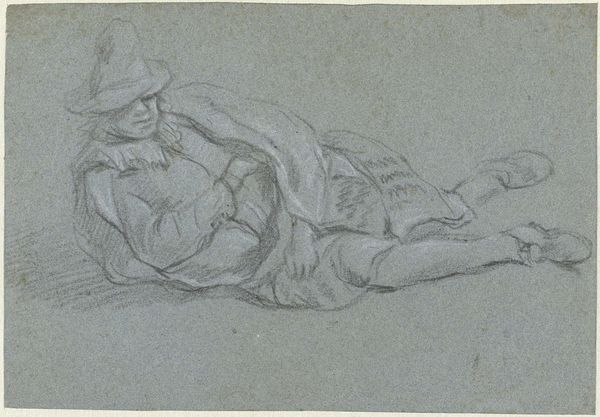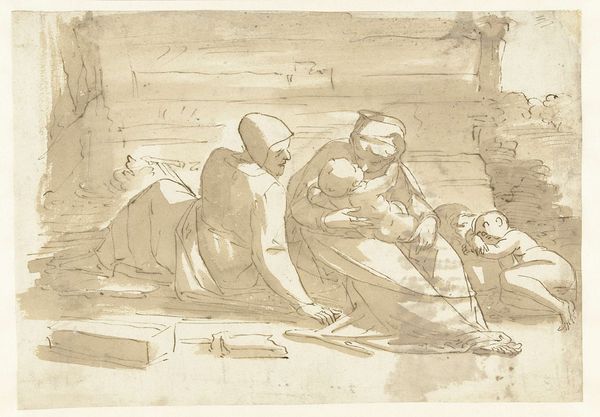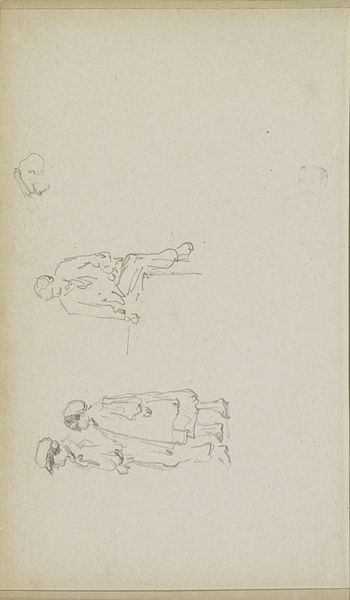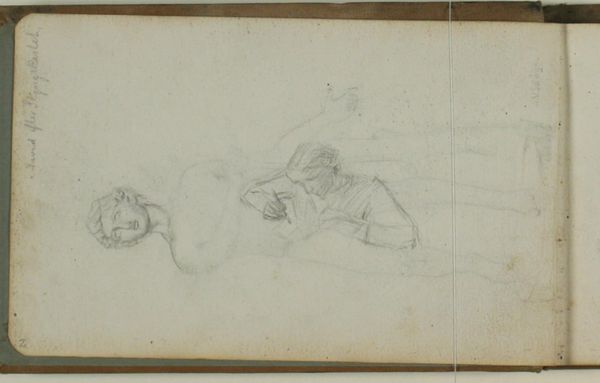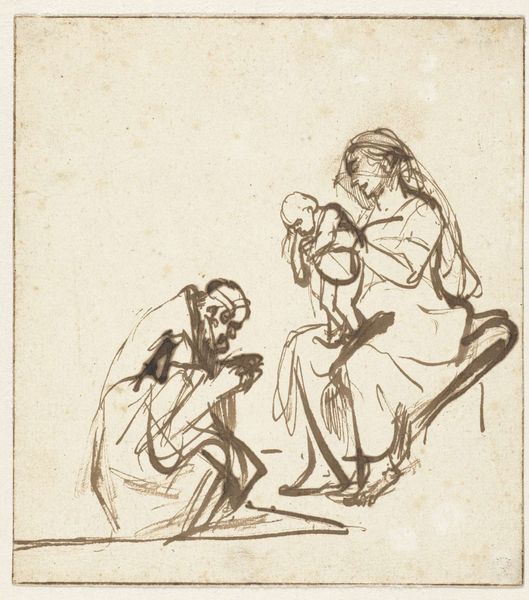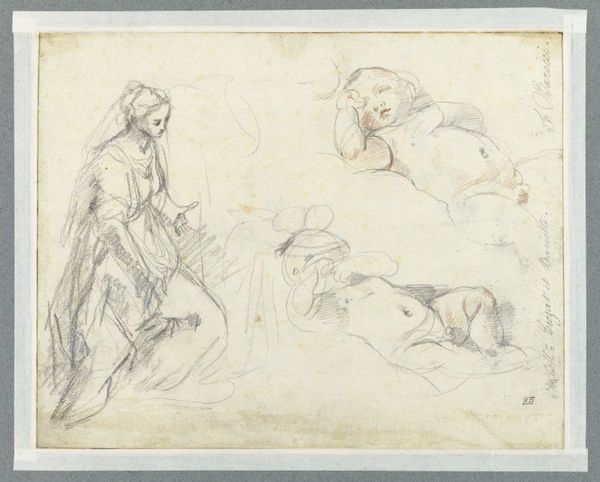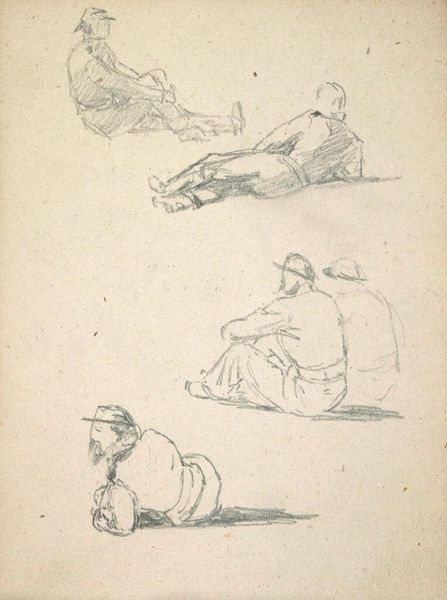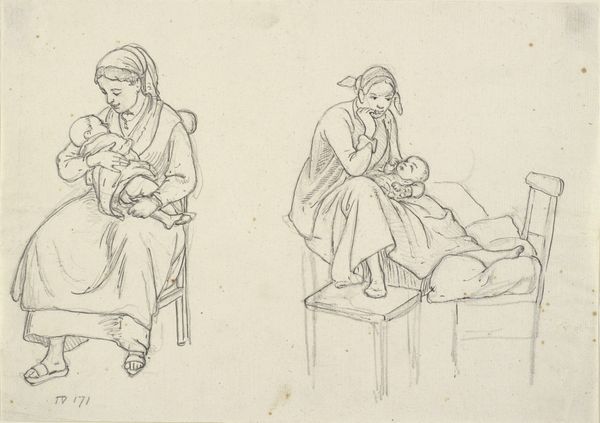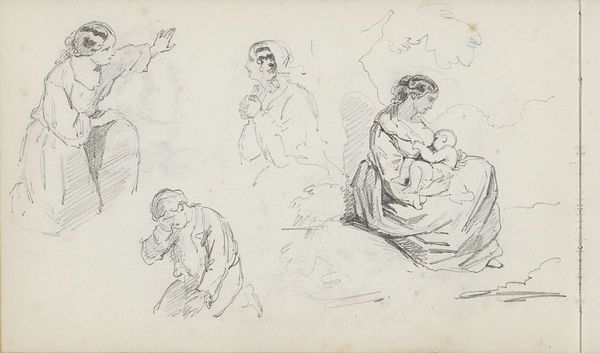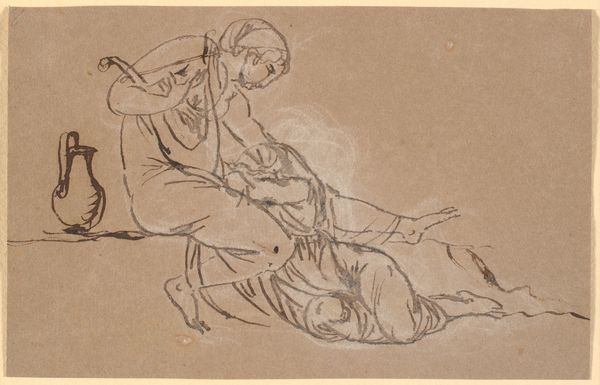
Copyright: Public Domain: Artvee
Curator: Alright, let's delve into Wilhelm Marstrand's 1851 drawing, "Two Studies of a Swedish Girl with a Child in Her Lap." It’s interesting how quickly sketches can grab you, isn't it? Editor: Absolutely. My first impression is of warmth and tenderness, but also…constraint. The lines are delicate, but there's a sense of enclosure, almost as if the figures are shielding themselves. What really catches my eye is the visible textile – I wonder where he found it and how the materiality of such cloth played into Marstrand’s narrative intention? Curator: Good eye. It’s amazing that he renders the mother's expression so clearly and you are already looking at material. With just a few lines, Marstrand suggests the protectiveness, the weariness, maybe even the anxieties of motherhood. It strikes me that there's also a beautiful melancholy here, which seems counterintuitive with motherhood in mind. Editor: Right, the romantic and realism styles in full force there! We are looking at the textile – like a window into production in the nineteenth century – how its availability shaped societal aesthetics and functions, which makes this a valuable social commentary of that period. The precision of the clothing implies attention to its place in everyday labor and routine for them both. What stories it would tell… Curator: Exactly. And maybe it’s the starkness of the drawing medium that brings this sense of intimacy to the fore? No colour to distract. As an aside, there is actually evidence that in 1850s, that the cotton industry made considerable innovations on a mechanical basis; however I'm doubtful we'd be able to deduce if that impacted what we are seeing directly on the canvas! But to keep on our track – these were turbulent times in Europe, post the revolutions of 1848. Could Marstrand be hinting at themes of refuge and belonging? I would wager his intention might be towards making people realize how the smallest piece of comfort can shield. Editor: Definitely! But how accessible would this have been to all social classes then? And what’s fascinating, thinking materially again, is that even in a “simple” sketch, the paper itself has a history. How would it have been produced at this time, what were the labour conditions like? The work’s existence as drawing has an undeniable presence. Curator: Oh, without question, you’re pulling on threads that show connections! From a personal reflection – I love how economical Marstrand is in rendering a sense of complex tenderness, like each sketch holds the seed of a story, only partially told. And for the Materialist, you make clear this one isn't really a single moment! Editor: Indeed, it has its very being as a combination of material networks... Thank you!
Comments
No comments
Be the first to comment and join the conversation on the ultimate creative platform.
